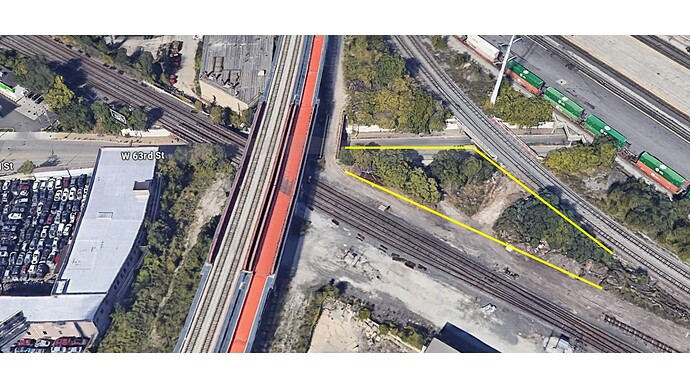Englewood Union Station, located at 63rd and State Streets on the south side of Chicago, was never called Big, but the station was a big deal in its heyday, serving as a major rail junction and passenger depot. Four railroads served the station, the Rock Island, New York Central, Pennsylvania and Nickel Plate which had trackage rights from New York Central. There was nothing fancy about Englewood Union Station. It was a one-story building high above the street, accessed by a concrete stairway
Source: Monon Railroad Historical Technical Society
The junction carried Rock Island trains on a 2-track mainline running north and south. The 2-track Pennsylvania mainline intersected with the Rock Island tracks running east and west. The New York Central and Nickel Plate trains ran on a 2-track north-east-west New York Central mainline that curved behind the station to join up with the 2-track Rock Island mainline.
Source: Industrial History: Englewood Junction: Pennsy vs. Rock Island
Little Englewood Station, located at 63rd and Wallace Streets, was located a mere six blocks west of Englewood Union Station. The station was owned and operated by the Chicago & Western Indiana Railroad (C&WI).
Source: The Blackhawk Collection
The station served as a stop for the Erie, Monon Wabash and Chicago & Eastern Illinois Railroads as well as the Chicago & Western Indiana Railroad. Only the Grand Trunk Western, one of the 5 roads that owned the C&WI, did not serve Little Englewood Station since it entered the C&WI mainline about 2 miles north of the station. Although the Grand Trunk Western (GTW) did not serve Little Englewood Station, it did have a station at 63rd Street and Central Park Avenue about 4 miles west of Little Englewood Station.
63rd Street not only was the location for these three aforementioned passenger stations but also for a fourth station, Woodlawn Station, at 63rd and Dorchester Streets in the Woodlawn neighborhood of Chicago, 14 blocks east of Englewood Union Station. The Woodlawn station was served by the Illinois Central Railroad.
What this all meant was that 12 passenger trains entering Chicago from the south and east made a local stop at 63rd Street on the south side of Chicago before heading into downtown Chicago as the northern terminus.







